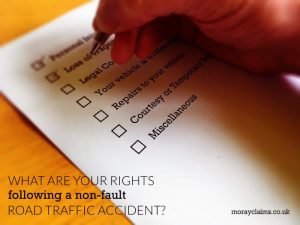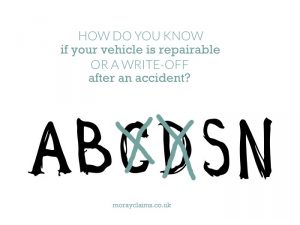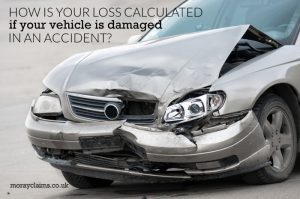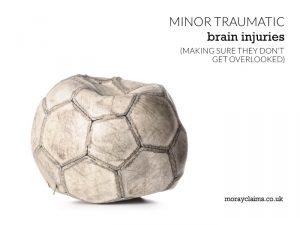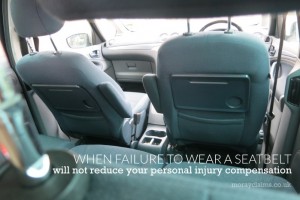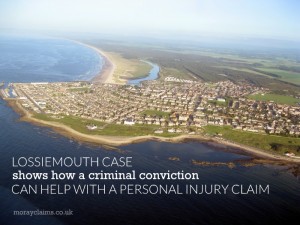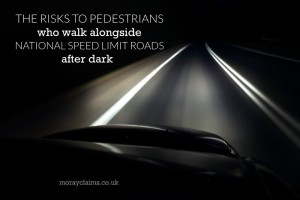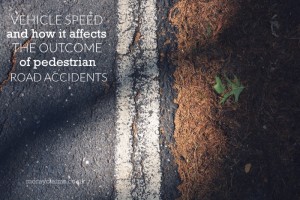It's compulsory to have insurance to cover the risk that a third party will suffer loss because of your driving That’s the case whether the “injury” is to property or a person. As at 2016, however, figures published by Churchill Insurance suggested that, across the UK, there were estimated to be over a million uninsured motorists. In the worst urban hotspots (e.g. parts of London), you have as much as a one in eight chance that any motorist involved in an accident with you will be uninsured. What are important things to know if you are involved in an accident with an uninsured (or untraced) driver? The Government set up the Motor Insurers’ Bureau (MIB) in 1946. It is a limited company and it aims to help those who have suffered loss due to the actions of an uninsured or untraceable driver. The underlying principle is that no person should be left uncompensated because a driver who causes an accident is uninsured. Since the 1970s, the MIB has been an important means by Continue Reading
When can you claim for the loss in value of a repaired car?
Where there is a personal injury claim arising out of a road traffic accident, there is often a claim for damage to a car as well. As we have discussed elsewhere, claims for damage to vehicles will be valued on the basis of the lower of: the cost of repairs; and the net pre-accident value of the vehicle (in other words, the pre-accident value of the vehicle, less any scrap value). Another way of putting it is to say that, if the cost of repairing your vehicle will be “too high” relative to its value, the maximum you will get for it will be its net pre-accident value. What if your car was very new when it was damaged? In that case, while it may be economical to repair the vehicle, you might well feel that your repaired vehicle - even if it has been very well repaired – has lost value compared to what it would have been worth for resale if it had not been in an accident at all. It’s an interesting question: whether the owner of a car which is damaged in a road traffic Continue Reading
What are your rights following a road traffic accident that was not your fault?
The Competition & Markets Authority (CMA) is a UK government department, responsible for strengthening business competition and preventing and reducing anti-competitive activities. In September 2014, it produced a report following an investigation into the private motor insurance market. One of the things they considered was the possibility of providing improved information to consumers on their rights following an accident. They noted that there appeared to be market-wide support for such a measure. CMA found a poor level of awareness among consumers about their basic rights following a road traffic accident that was not the consumer's fault. The report summarises the legal and factual background to its remit. It explains how the law requires motorists to hold a valid insurance policy to cover “third party” risks. In other words, insure against the risk they will injure another person or their property through their driving and have to pay compensation for those Continue Reading
How do you know if your vehicle is repairable or a write-off after an accident?
If your vehicle is damaged in an accident, how your loss is measured will depend on whether it is regarded as economically repairable or not. In this process, it is the market value of the vehicle at the time of the accident which matters as the economic benchmark. The amount it’s insured for does not matter. Neither does the likely replacement cost. The seriousness of accident damage is ranked by insurance assessors using various categories. Prior to 01 October 2017, the four categories were A to D, with A being most seriously damaged and D least severe. In the name of “progress”, this logical system has now been replaced by something less intuitive. The categories are now A, B, S and N. Categories A and B are unchanged from before. Category A vehicles are so badly damaged that they must be scrapped and crushed. No salvage of parts for re-use is allowed. Under Category B, vehicles are again extensively damaged, though some parts may be salvageable. The vehicle must be Continue Reading
How is your loss calculated if your vehicle is damaged in an accident?
Personal injury claims often result from road traffic accidents. In that context, clearly, potential claims for damage to cars will also come up. In what circumstances will a damaged car be treated as a total loss? In other words, what is the basis of calculation of the claim you can make if your car is damaged? In Scotland, the law dates back to the case of Pomphrey –v- Cuthbertson, decided in 1950. This arose out of a road accident in 1948. William Pomphrey, a newspaper proprietor from Wishaw, and his wife, Joan, made claims for personal injury compensation and losses on Mr Pomphrey’s vehicle against James A. Cuthbertson Limited, agricultural engineers. Mr Pomphrey’s Fordson commercial motor car had been damaged in the collision between the car and a Dodge motor lorry, owned by Cuthbertson and driven by one of their employees. The claim was based on vicarious liability and liability was admitted. The accident had been caused by Cuthbertson’s employee’s negligence. So Continue Reading
Why you might be surprised who qualifies as a cohabitee (more people than you’d expect)
In modern society, cohabitation is an increasingly popular family structure. As one aspect of the response to this change, the Family Law (Scotland) Act 2006 was enacted to provide particular limited rights to cohabiting couples. On the breakdown of their relationship within their lifetimes, a former cohabitee has the chance to make a claim for financial provision from his or her former partner. On the death of one of them – provided they did not leave a will – the survivor can make a claim for financial provision from the deceased’s estate. The time limit for a “separation” claim is one year from the date of separation and, for a “death” claim, only 6 months. These time limits are very short indeed and they cannot be extended. As a sort of public information drive, we have a poster we often display outside our offices which summarises the time limit for death claims. If a cohabitee dies as the result of an accident which is due to the fault or breach of duty of Continue Reading
If you were not wearing a cycle helmet can you still claim for personal injury?
The law in the UK does not require pedal cyclists to wear a helmet. What this means is that you won’t be stopped by the police if you fail to wear a cycle helmet. You won’t be prosecuted under the criminal law. On the other hand, Rule 59 of the Highway Code categorises cyclists as vulnerable road users and advises that cyclists ‘should wear a cycle helmet which conforms to current regulations, is the correct size and securely fastened’. The Highway Code is relevant to both criminal and civil law. Claims for personal injury compensation are civil claims for damages, so the Highway Code is relevant. Many cyclists ride without a helmet. Only just over a third of cyclists using major urban roads wore cycle helmets, according to research findings of the UK’s Transport Research Laboratory in 2008. Equivalent research in Germany apparently showed that only 11 % of cyclists in towns and cities wear a cycle helmet. Cycle helmets have to comply with a European standard. This Continue Reading
Compensation for Subtle Brain Injuries
One of the most outstanding English football centre forwards of the 20th Century tells of how, in February 1941, he received his call-up papers to the Royal Air Force. After his basic training, he passed on to the course set for a wireless-operator air-gunner. His training took him to numerous places across England. Finally, he was posted to Moray where he was to have an accident which could easily (at best) have ended his footballing career before it had even begun. He takes up the story in his 1949 autobiography, “Football Is My Game”. “It was while I was at Lossiemouth that I met with the accident which nipped my “career” as a W/op.A.G. in the bud, and prevented me from being sent abroad. We were on operational training; the Wellington (bomber aeroplane) caught fire, and down we went in a dive. We finished in a fir plantation. The pilot and bomb-aimer were killed. The navigator lost a leg. I got out alive with various injuries of which the worst was a head wound Continue Reading
When not wearing a seatbelt will not reduce your personal injury compensation at all
The modern car seatbelt was invented by a former aviation engineer, whose experience included working on ejector seats. By 1959, cars had seatbelts but only two-point waist restraints. In a car accident, this often did the wearer as much harm as good. Volvo engineer, Nils Bohlin, created a design which anchored the straps low beside the seat. This meant that the geometry of the belts formed a “V” - pointing at the floor – and that the belt would remain in place and not shift under sudden loading. Such a significant advance in driver and passenger safety could have netted Volvo a fortune on the patent. Instead, they gave it away. They decided that the invention was so revolutionary that its value should not profit their company but be a free, life-saving tool. In the world of personal injury claims, if you fail to wear a seat belt and are injured in a road traffic accident, you don’t expect to be free from blame. As we’ve examined elsewhere on this website, UK personal injury Continue Reading
How a Criminal Conviction helps with a Personal Injury Claim
A personal injury claim arising from an incident which took place in a Lossiemouth pizza takeaway has provided a good example of how a criminal conviction can be used in a personal injury claim to pave the way for the claim to succeed. This is a procedural decision from the All-Scotland Personal Injury Court in Edinburgh. In this article we will consider three aspects of how a criminal conviction helps with a personal injury claim. Firstly, we will look at the law in relation to the use of criminal convictions in civil proceedings such as personal injury claims. Secondly, we will see how the reference to a criminal conviction in the Lossiemouth case helped the claimant establish that compensation should be payable to him. Finally, we will look at the question of whether it is ever possible for a person who is blamed for an accident/injury to argue their way out of it even if there is a criminal conviction against them. Continue Reading
Why Walking on National Speed Limit Roads during the Hours of Darkness is such a Bad Idea
Most of us did this experiment in school Science class. Using a 30cm ruler, one person holds it at the “30” mark and lets it hang down vertically. Their partner (person 2) puts the thumb and first finger of one hand at either side of the “0cm” mark on the ruler. Person 2’s fingers should almost touch the ruler, but not quite. Without warning, person 1 lets go of the ruler. Person 2 tries to stop the ruler’s descent as quickly as they can, by closing their finger and thumb together. You record the level (in cm), just above person 2’s finger, where the ruler was caught. You repeat the test five times and work out the average “catch distance” for the person. A conversion table allows you to translate the distance along the ruler into a reaction time, in milliseconds (thousandths of a second – i.e. one second is a thousand milliseconds). According to one such table, the first centimetre (“0cm – 1cm”) equates to 50 milliseconds. It then increases by 10 milliseconds per Continue Reading
How Speed Affects the Outcome of Pedestrian Road Accident Collisions
Escape velocity is the speed an object must reach to break the bonds of a planet’s gravitational force and get into orbit. To enter orbit around the Earth, for example, a spacecraft needs to be going at a staggering 7 miles per second (25,000 miles per hour). This creates a difficult series of connected problems. The vehicle requires a lot of fuel. Fuel adds weight. More weight means more thrust is required. Greater thrust demands more fuel. And so it goes on … Another situation where speed has a crucial effect on the outcome is in relation to pedestrian road traffic accidents. In this article, we will consider the significance of vehicle speed in pedestrian collisions. Secondly, we will consider the effect of some other factors apart from impact speed. Finally, we will look at some of the implications for measures which can be taken to improve road safety. Frontal impact collision research has considered the effect of speed. Research into road accidents involving Continue Reading


